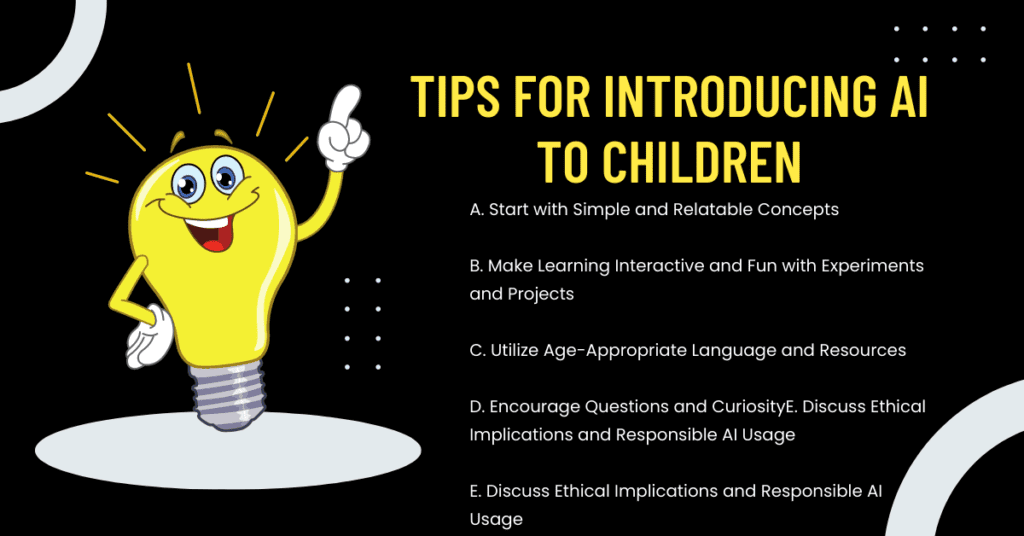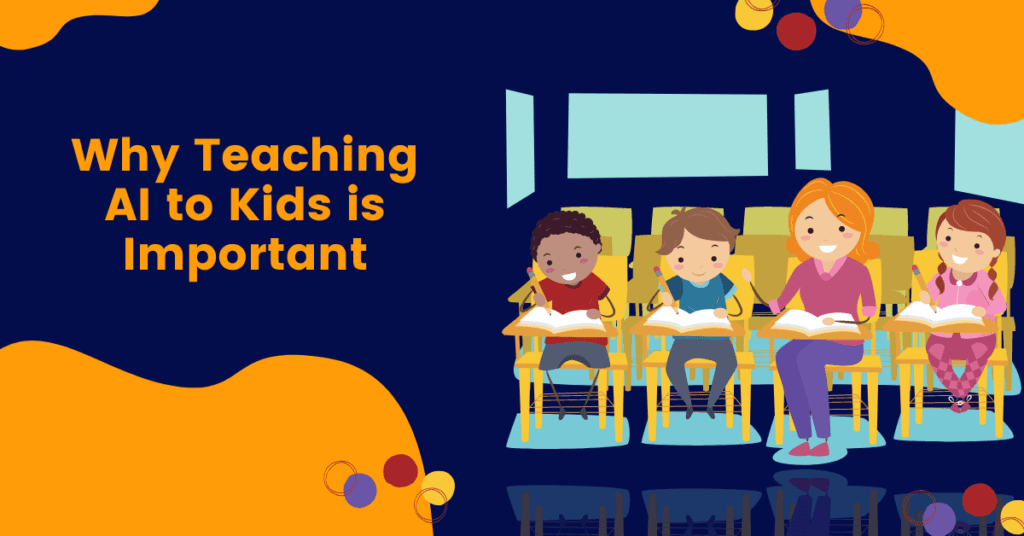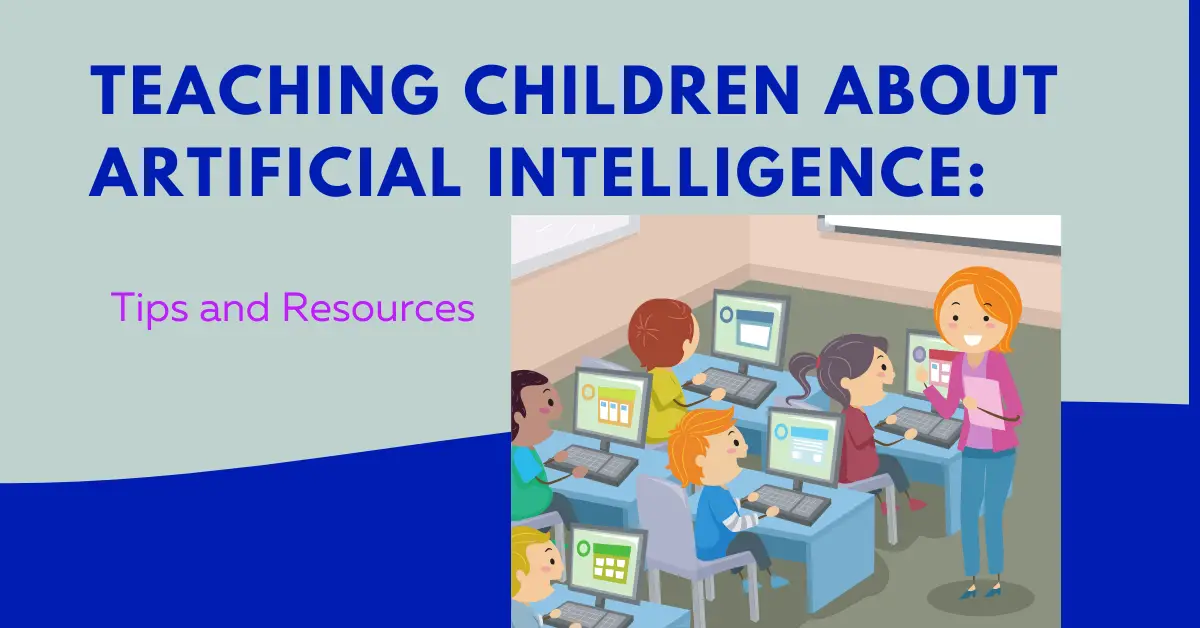Artificial Intelligence (AI) is rapidly reshaping the world as we know it. AI is being used for everything from helping with homework to coming up with fun activities for family nights. With its ever-growing presence and significance, the understanding of AI is becoming as essential as reading, writing, and arithmetic in preparing our children for the future. This article aims to provide tips and resources for teaching children about AI, a skill that will be increasingly crucial as they grow up in a digital world driven by machine learning and automation.
The Basics of Artificial Intelligence
Before diving into teaching methods and resources, it is essential to establish a fundamental understanding of what Artificial Intelligence is. AI is a branch of computer science dedicated to creating machines and software that can solve problems, learn from experience, and perform tasks that would typically require human intelligence. These tasks could include understanding natural language, recognizing patterns, making decisions, and predicting outcomes.
The concept of AI dates back to the mid-20th century, with the term ‘Artificial Intelligence’ being coined by computer scientist John McCarthy in 1956. Since then, AI has evolved remarkably, transitioning from simple rule-based systems to sophisticated models powered by machine learning and deep learning algorithms.
AI impacts our lives in many ways, often without us even noticing. From the recommendations you get on your favourite streaming platform to the voice-activated assistant on your phone, AI is working behind the scenes. Explaining these daily-life applications of AI can help children grasp the concept more tangibly.
Importance of Teaching AI to Children
In an increasingly digitized world, the ability to understand and work with AI will play a critical role in the job market of the future. Numerous industries, from healthcare, to finance to entertainment, are incorporating AI into their operations, leading to a growing demand for individuals skilled in AI and machine learning. Teaching children about AI from an early age can equip them with the knowledge and skills necessary to thrive in this evolving landscape.
Beyond future job prospects, early exposure to AI concepts can bring a host of other benefits. AI is a multidisciplinary field, combining elements of mathematics, computing, logic, and even philosophy. As such, learning about AI can help children develop a range of skills, including problem-solving, critical thinking, and creativity.
Additionally, introducing AI at a young age can stimulate children’s curiosity about the world and how it works. AI provides a lens through which children can explore complex phenomena, from weather patterns to human behaviour, fostering an interest in learning and discovery.
Lastly, discussing AI with children provides an opportunity to impart crucial lessons about ethics and responsibility. As AI technologies become more powerful, it’s essential to understand their potential misuse and the importance of using such technologies responsibly. Teaching children about the ethical implications of AI can help nurture a generation of technologically savvy and ethically conscious individuals.

Tips for Introducing AI to Children
Introducing children to the world of AI can seem like a daunting task given the complexity of the subject, but there are several strategies that can make the process more approachable and enjoyable.
A. Start with Simple and Relatable Concepts
Begin by relating AI to things they encounter in their everyday life. Explain how AI powers their favourite video games, helps recommend movies on streaming platforms, or enables voice recognition in their digital assistants. Simplify complex AI terms and principles into relatable concepts that children can easily understand.
B. Make Learning Interactive and Fun with Experiments and Projects
Children learn best when they’re actively engaged. Incorporate hands-on experiments and projects that allow them to see AI in action. This could involve simple coding projects, using AI-powered toys, or even designing their own “smart” solutions to problems around them.
C. Utilize Age-Appropriate Language and Resources
When explaining AI, use language that is suitable for their age and comprehension level. Avoid jargon and complex terms that might confuse them. Choose resources and learning materials designed specifically for their age group, with clear, easy-to-understand explanations and engaging visuals.
D. Encourage Questions and Curiosity
Children are naturally curious, and it’s essential to nurture this curiosity when teaching them about AI. Encourage them to ask questions, explore different concepts, and delve deeper into topics that interest them. Make it a two-way learning process, ensuring they feel heard and understood.
E. Discuss Ethical Implications and Responsible AI Usage
While children should understand the capabilities of AI, they should also be aware of the potential misuse and the importance of ethics in AI. Encourage discussions about the impact of AI on society and the responsibilities that come with using AI technology. This can help nurture a sense of accountability and understanding of the broader implications of AI.
Resources for Teaching AI to Children
There is a wealth of resources available that can aid in teaching children about AI, ranging from online platforms to physical learning kits. Here are a few notable ones:
A. Online Platforms and Courses
- Coding Games and Apps
- Code.org: This website offers a variety of free coding courses tailored for different age groups. It also provides an “AI for Oceans” activity that introduces AI concepts in a fun, interactive way.
- Tynker: Tynker offers a range of coding courses for kids, including courses on AI and machine learning.
- MOOCs focused on AI for Children
- Elements of AI: A free online course that introduces the basics of AI to people from a wide range of backgrounds. It’s suitable for older kids and teens.
- Coursera’s AI For Everyone: Although not specifically designed for children, this course uses simple language to explain AI concepts and could be useful for older children or for parents seeking to teach their children.
B. Books and Publications on AI Suitable for Children
“Hello Ruby: Journey Inside the Computer” by Linda Liukas introduces children to the basics of computing and AI in a fun and engaging manner. – “Robot Rules: Regulating Artificial Intelligence” by Jacob Turner provides an easy-to-understand introduction to AI ethics, suitable for older kids.
C. AI Kits and Toys that Promote Hands-on Learning
Cozmo is a small robot that introduces kids to AI concepts through games and creative coding. – Lego Boost allows kids to build and program their own robots, teaching them basic coding and machine learning principles.
D. Local Community Resources such as AI Clubs, Workshops, and Events
- Many local communities host technology clubs, hackathons, and coding boot camps for children. Check with your local library, community centre, or school district to see what resources are available in your area.
Remember that each child’s learning style and pace may differ, so it’s essential to explore a variety of resources and choose the ones that best meet your child’s needs.

Why Teaching AI to Kids is Important
Artificial Intelligence is a field that will continue to shape our society in profound ways in the coming decades. As such, there are several reasons why it is critical to start teaching children about AI.
A. Future Job Prospects
As AI technologies continue to advance and find their way into more and more industries, the demand for AI expertise will only grow. Jobs of the future will increasingly require at least a basic understanding of AI and machine learning principles. By introducing children to AI early on, we can equip them with the skills they’ll need to excel in the job market of the future.
B. Developing Problem-Solving and Critical Thinking Skills
AI education isn’t just about preparing kids for future jobs; it’s also about helping them develop valuable life skills. Learning about AI can help children develop critical thinking and problem-solving skills as they learn how to design AI systems and understand their mechanisms. These skills are transferable and can benefit children in all areas of life.
C. Ethical Implications
As AI becomes more integrated into our lives, it’s increasingly important for individuals to understand the ethical implications associated with its use. Teaching children about AI also means teaching them about privacy, fairness, and the potential for bias in AI systems. By instilling a sense of responsibility and ethics early on, we can help ensure that the future generation uses AI responsibly.
D. Empowerment and Inclusion
AI is already shaping the world in significant ways, and those who understand it will have a voice in shaping its future. By teaching children about AI, we can empower them to be not just passive consumers of technology, but active participants in shaping how it’s used in the future.
In summary, teaching AI to children is about more than just imparting technical knowledge. It’s about preparing them for the future, helping them develop valuable life skills, teaching them about ethics, and empowering them to shape the world.
Overcoming Challenges in Teaching AI to Children
While introducing AI to children can be an exciting and rewarding process, it does not come without its challenges. However, with the right approach and resources, these can be effectively addressed.
A. Addressing Common Misconceptions about AI
One of the challenges is dispelling the common misconceptions children might have about AI, often influenced by popular media. Educators can tackle this by providing a balanced view of what AI can and cannot do and emphasizing the difference between reality and science fiction.
B. Strategies for Teaching Complex Concepts in Simple Ways
AI involves complex concepts that can be difficult for children to grasp. Breaking down these concepts into simple, understandable terms is essential. Using analogies, real-life examples, and interactive activities can help make the learning process easier and more enjoyable.
C. Keeping Children’s Interest Sustained in AI Learning
Like any other subject, maintaining a child’s interest in AI can be challenging. Making the learning process fun and engaging, tying it with their interests, and showing them real-world applications of what they’re learning can help keep their enthusiasm alive.
Final Thoughts On Teaching Children About AI
Understanding AI and its implications is crucial for the digital natives of today’s world. Early education in AI equips children with skills that are essential for the future, such as problem-solving, critical thinking, and an understanding of ethics in technology. By using the right strategies and resources, we can make AI education an engaging and fulfilling journey for children. As parents, educators, and policymakers, we must invest in AI education to shape a future where technology is used responsibly and ethically.
Also, if you’re looking for a place to start, our 90 ChatGPT prompts for parents is a great starting point!

